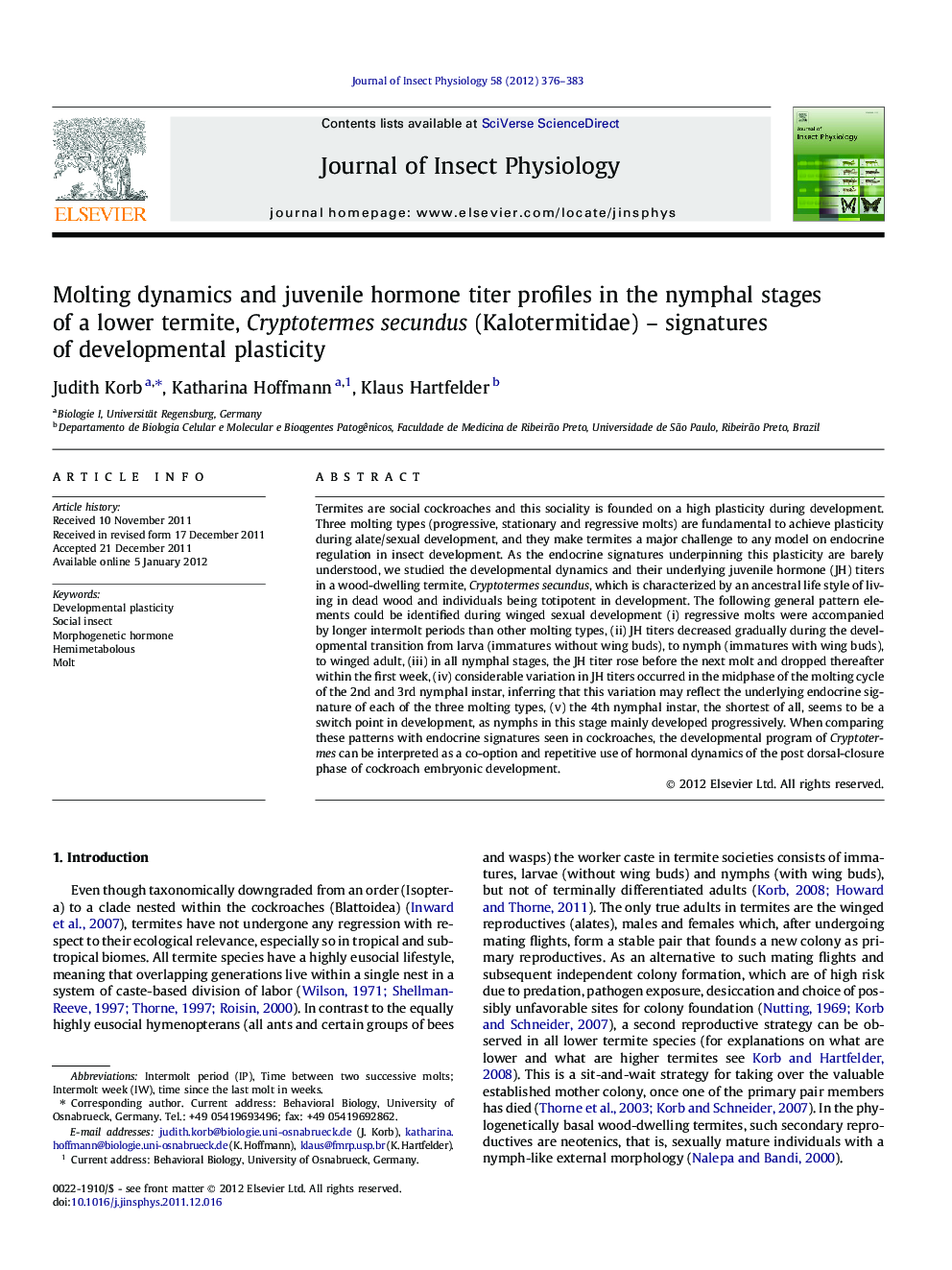| Article ID | Journal | Published Year | Pages | File Type |
|---|---|---|---|---|
| 2840669 | Journal of Insect Physiology | 2012 | 8 Pages |
Termites are social cockroaches and this sociality is founded on a high plasticity during development. Three molting types (progressive, stationary and regressive molts) are fundamental to achieve plasticity during alate/sexual development, and they make termites a major challenge to any model on endocrine regulation in insect development. As the endocrine signatures underpinning this plasticity are barely understood, we studied the developmental dynamics and their underlying juvenile hormone (JH) titers in a wood-dwelling termite, Cryptotermes secundus, which is characterized by an ancestral life style of living in dead wood and individuals being totipotent in development. The following general pattern elements could be identified during winged sexual development (i) regressive molts were accompanied by longer intermolt periods than other molting types, (ii) JH titers decreased gradually during the developmental transition from larva (immatures without wing buds), to nymph (immatures with wing buds), to winged adult, (iii) in all nymphal stages, the JH titer rose before the next molt and dropped thereafter within the first week, (iv) considerable variation in JH titers occurred in the midphase of the molting cycle of the 2nd and 3rd nymphal instar, inferring that this variation may reflect the underlying endocrine signature of each of the three molting types, (v) the 4th nymphal instar, the shortest of all, seems to be a switch point in development, as nymphs in this stage mainly developed progressively. When comparing these patterns with endocrine signatures seen in cockroaches, the developmental program of Cryptotermes can be interpreted as a co-option and repetitive use of hormonal dynamics of the post dorsal-closure phase of cockroach embryonic development.
Graphical abstractFigure optionsDownload full-size imageDownload as PowerPoint slideHighlights► Developmental plasticity in termites is a challenge to understanding insect development. ► We studied molting types (progressive, stationary, regressive) and JH titers in a lower termite. ► JH titers decreased gradually during nymphal development with peaks around molting. ► JH titer variation and duration of molting cycles reflects different molting types. ► We interpret this as a co-option of hormonal dynamics seen in late cockroach embryos.
